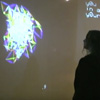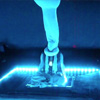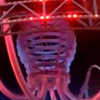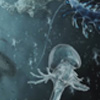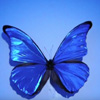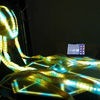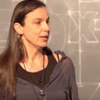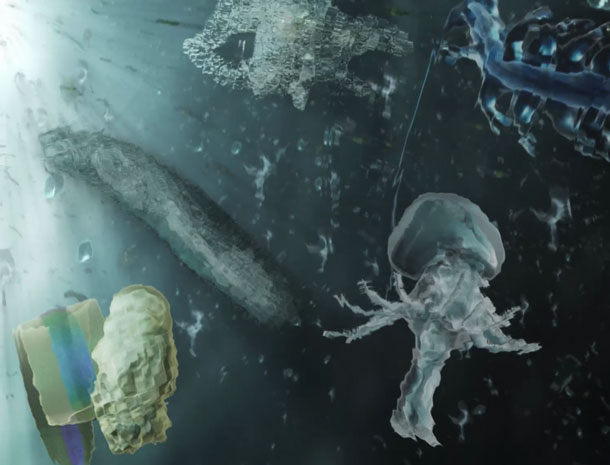
Noise Aquarium utilizes 3D-scans of these micro creatures obtained with unique scientific imaging techniques immersing the audience in a 3D ‘aquarium’ of diverse planktons projected as large as whales. Participants create destructive visual and audio noise by their presence alone as we are all implicated by our inaction.Current studies show the destructive power of underwater noise on large marine life with shocking examples of stranded whales and dolphins. However, almost nothing is known about the possible impact on the marvelous microscopic organisms such as the plankton, and addition of micro plastics further compromises the ecological balance.
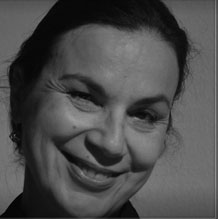
About the artist
Victoria Vesna, Ph.D., is an Artist and Professor at the UCLA Department of Design Media Arts and Director of the Art|Sci Center at the School of the Arts (North campus) and California NanoSystems Institute (CNSI) (South campus). Although she was trained early on as a painter (Faculty of Fine arts, University of Belgrade, 1984), her curious mind took her on an exploratory path that resulted in work that can be defined as experimental creative research residing between disciplines and technologies.
Skills Applied
 SCIENTIFIC IMAGING
SCIENTIFIC IMAGING
 INTERACTIVE ART
INTERACTIVE ART
 BIOTECHNOLOGY
BIOTECHNOLOGY
Message From The Artist
My journey starts with terrible math and science teachers so early on I turned to art schools where I got absolutely zero education in science and technology. But, while growing up in NY in the 70’s, through my father’s obsession with Nikola Tesla, I was absorbing a lot of scientific concepts through osmosis. In retrospect, I think that this was the seed that kept growing inside me and attracting me to explore the deeper aspects of the natural world. Later I learned the fundamentals of working collaboratively in a group and started to play with video, sound, light and performance. But all this was happening in separate worlds until I started working with nanoscientist James Gimzewski who was the first scientist I collaborated with on an artwork where we were equally involved and truly blurred the lines of art, science and technology. In the Paseo installation, Noise Aquarium, I collaborated with biologists, chemists, nano-toxicologists and an animator all working together towards a common goal – to raise consciousness about noise pollution in our oceans. Click on the STEAM Activities below to try out some of my favorite activities such as learning how to hack your webcam into a microscope, creating cyanotypes from iPhone images or exploring plankton as inspiration for art and design.
Explore Artist Tool
The Explore Artist Tool provides a step-by-step process for getting to know the artist, to see examples of the artists work, research the science and technology that informed the work, experiment with some hands on activities and tools to better understand how the artist thinks and works, collaborate with your peers to exchange ideas on what you learned and what you liked, and finally to present something that you write or create that is inspired by your research and exploration. This tool will take you through each stage of the process with a focus on each artist’s work.
Research the STEAM
Once you have explored all the artists it is time to pick your favorite and go back to their page. Now you can dig deeper in the STEAM wiki to research the artist. Learn as much as you can about how the artist made the installation. Find out about the technology that was used. What is the science that informed it? How does the artist work impact communities? the environment? Why do you think this work is interesting or important? The goal here is to pick a STEAM activity. Again it could be a group project or individual project.
Time to experiment and create with hands-on activities
Now that you and your class have decided on the artist and STEAM activity it is time to start experimenting. if you are writing a report start your draft, if you are creating an art piece or installation start sketching or constructing prototypes or you may be trying out a new science experiment. This is your chance to do some hands on project to really understand the artist’s art process.
Collaborate with peers to share and get feedback
The next step is to collaborate with your peers to share your work, exchange ideas and get feedback. Perhaps you have been working on an experiment and you need some help. Maybe you are excited about something you learned or created and just would like to share with you peers. This is the time to discuss and listen to other people’s ideas and what they learned to get a different perspective. Check out the Feedback Tool for some suggestions on how to give and receive feedback constructively.
Present your final creation
Once you have received feedback and finalized your project it is time to share. This could be in the form of an art exhibit if everyone chose to create art. Perhaps you all decided to work on the same activity and you all share your experiences working on the project. You will decide this with your teacher and peers. Have fun and don’t forget to share your work with us in the form of photos or videos! We would love to see what you learned and we will be sure to share with the artist.
STEMarts Wiki
The STEAM-Wiki is a place to get started with your artist research. You will find links to articles, images, video, and tutorials that relate to Victoria’s work.
You can search by clicking on the links below or you can click on the topic words in the word cloud for specific areas of interest. For example, BIONANOTECHNOLOGY to learn about the scientific research behind the work or SOUND for experiments around the sound component of the installation. If you are looking for STEM + Art activities type in STEAM Activities.
Remember the resource is an open forum sharing links and ideas that others have found – always check your sources and give credit where credit is due. The open source movement generously shares its knowledge and relies on user feedback – so if there’s something really good or doesn’t work let others know.
3D scanning ALL Ars Electronica article art inspiration Art tools Audio Waves bees bionanotechnology bionantechnology biotech experiments fire gas human noise human technologies interview iphone tools laser pen lens microscopic microscopic camera microscopic creatures model noise pollution ocean ocean habitats oceans optical photography plankton plankton art plankton research project research science research seeing sound sound experiments STEAM activities STEAM experiments video View All waves


